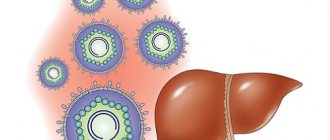Pneumonia is a common disease that affects adults and children, requiring timely and qualified treatment. Otherwise, the consequences of the disease can be extremely severe. The main symptom of pneumonia is sputum production. Its color allows the specialist to draw conclusions regarding the severity and nature of the disease.
When the first signs of pneumonia appear, the patient should definitely consult a doctor. You can make an appointment at the Yusupov Hospital using the electronic form on the website or by phone.
Pneumonia itself occurs extremely rarely. As a rule, it is a complication of advanced forms of diseases of the respiratory system. The doctor prescribes a course of treatment for pneumonia depending on the nature of the disease. Pneumonia can be:
- bacterial;
- viral;
- fungal;
- mixed.
The main symptom of pneumonia in children and adults is sputum. It is its color that is taken into account when making a diagnosis. To prevent the development of pneumonia, it is important to seek medical help for any ailments.
Doctors at the Yusupov Hospital are leading specialists in Russia who select an individual treatment program for each patient, allowing them to cure any disease in the early and advanced stages. Timely consultation with a doctor and an effective course of treatment can prevent the development of such a serious pathology as pneumonia.
White or gray sputum
Transparent sputum, discharge of white and gray shades are absolutely normal. But their excessive quantity may indicate various pathologies, namely:
- allergies;
- chronic bronchitis;
- respiratory tract infections;
- pulmonary edema.
Gray sputum may be the result of smoking or severe air pollution.
Diagnostics at the Yusupov Hospital will either refute the suspicion of pathology, and the patient will know for sure that nothing threatens his health, or will allow a timely course of effective treatment to be prescribed and prevent the development of severe complications.
To make an appointment with a doctor at the Yusupov Hospital, you do not need to stand in queues, adjust your work schedule, the hospital administrators will coordinate a visit to the doctor at a time convenient for each patient.
Diagnostics
A qualified pulmonologist should identify the etiological factors that lead to the release of green sputum. During the examination, attention is paid to the symmetry of the participation of the chest in the act of breathing, signs of pulmonary insufficiency, and characteristic respiratory sounds are listened to. Informative diagnosis of diseases is impossible without laboratory and instrumental methods:
- X-ray examination.
X-ray of the chest in frontal and lateral projection shows areas of inflammatory infiltration of the lung tissue, areas of compaction, and contours of neoplasms. CT scan of the lungs helps to visualize the structure of the organ in detail. Bronchography is used to identify signs of bronchial deformation. - FVD study.
For the diagnosis of chronic bronchopulmonary diseases, spirometry is indicated, the results of which determine the vital capacity of the lungs, the volume of forced expiration and the degree of reversibility of changes. To quickly assess respiratory function, the peak flowmetry method is used. - Bronchoscopy.
Visualization of the bronchial tree by the endoscopic method is necessary when there are difficulties in differential diagnosis or when a malignant process is suspected. The method shows the condition of the bronchial mucosa, allows you to detect deformations and neoplasia. If necessary, a biopsy is taken using a bronchoscope. - Sputum analysis.
Microscopic examination of the biomaterial evaluates the content of blood cells, the presence of bacteria or fungal spores. Staining for acid-fast bacteria is required to exclude tuberculosis. Next, a bacteriological analysis of the discharge is performed.
Additionally, a clinical and biochemical blood test is required, which reveals signs of an inflammatory process. To clarify the diagnosis, an MRI of the lungs is performed. To examine the surface of the lung tissue, diagnostic thoracoscopy is recommended. If green sputum is caused by an infection of the nasal cavity, an otolaryngologist is consulted with rhinoscopy and x-ray of the paranasal sinuses.
Inhalation therapy
Sputum due to pneumonia is yellow in color
The appearance of a yellow tint in the sputum may indicate the development of acute pneumonia and acute bronchitis. It can also be a sign of allergies and asthma.
Yellow sputum indicates the body is fighting the virus and the immune system is functioning normally. Thick, dark yellow mucus may be due to a bacterial infection in sinusitis. If such a symptom appears, you should immediately seek medical help.
Trust your health to professionals. Doctors at the Yusupov Hospital are leading specialists in Russia who, based on the test results, will make an accurate diagnosis and develop an effective treatment plan for each patient.
Pneumonia is often a consequence of improperly prescribed treatment. In public clinics, quite often patients are treated for pathologies that they have never had, while the underlying disease develops at a faster rate. This picture is observed due to the low qualifications of doctors in state clinics, poor equipment of hospitals with modern medical equipment and the lack of medicines.
Treatment
Help before diagnosis
When purulent green sputum appears, it is very important to ensure that the respiratory tract is cleared of accumulated secretions. Patients are recommended to be in a postural drainage position several times a day and do breathing exercises. You should not take antitussive drugs that aggravate the course of the disease. Green sputum occurs with serious infectious or chronic processes, so self-medication is unacceptable.
Conservative therapy
Mild forms of chronic pathology are treated on an outpatient basis. Diseases that cause green sputum often dramatically worsen the patient's condition, requiring hospitalization. If signs of respiratory failure occur, oxygen support is provided. Etiopathogenetic therapy includes the following groups of drugs:
- Antibiotics
. Prescribed to destroy pathogenic microorganisms that cause the formation of purulent green sputum. Antimicrobial agents are selected taking into account the results of bacterial culture. For the treatment of tuberculosis, special antibiotics are used in combinations of 3-4 items. - Mucolytics
. They dilute sputum, due to which it is easily removed when coughing and does not stagnate in the bronchial tree. To enhance the effect, secretomotor agents are added that stimulate mucociliary clearance. - Bronchodilators
. Effective for chronic diseases accompanied by difficulty breathing. The drugs expand the lumen of the bronchi, so it becomes easier for a person to breathe, and phlegm is released freely during a coughing attack.
If standard measures are ineffective, they resort to bronchoalveolar lavage and aspiration of purulent secretions. When performing therapeutic bronchoscopy, intrabronchial administration of antibacterial drugs is possible. Among the physiotherapeutic methods, vibration chest massage, medicinal electrophoresis, and inhalations are actively recommended.
Sputum due to pneumonia is dark in color
The appearance of rust-colored sputum can be observed in smokers. This suggests that you need to get rid of the bad habit urgently. Also, dark color of sputum can be observed when consuming certain foods and drinks, for example, chocolate, coffee, red wine.
If dark-colored sputum is present for a long time, this may be a sign of:
- chronic pneumonia;
- chronic bronchitis;
- tuberculosis;
- lung cancer;
- pneumoconiosis.
In any case, the patient should consult a doctor.
Sputum from pneumonia mixed with blood
The presence of a pinkish tint of mucus, streaks and blood stains in it may indicate various diseases, the most dangerous of which is lung cancer.
But sputum mixed with blood can also appear when:
- pneumococcal pneumonia
- internal bleeding;
- tuberculosis;
- pulmonary edema due to chronic heart failure;
- lung abscess.
The appearance of sputum with blood is always a sign of a serious illness and requires urgent medical intervention. The Yusupov Hospital accepts patients 7 days a week, 24 hours a day. You can make an appointment with a doctor in advance by calling the clinic’s phone number.
Causes of green sputum
Pneumonia
Expectoration of green sputum is a typical sign of segmental or lobar pneumonia.
Purulent discharge with an unpleasant odor appears on days 2-4 of the disease. The patient begins a painful coughing attack, after which a moderate amount of sputum is released. Pneumonia is not characterized by the discharge of pus “a mouth full”, as with destructive lung damage. Coughing up sputum continues for 1-2 weeks. Gradually, the amount of green mucus decreases, the discharge becomes white-yellow and cloudy. In addition to this symptom, a person is bothered by a dull soreness in the chest, which gets worse when coughing. There is a febrile temperature, general malaise, and increased breathing. Patients avoid taking deep breaths to avoid exacerbating chest pain.
Chronical bronchitis
Green, thick sputum is mainly produced in people who have been ill for 4-5 years or longer. Deformations form in the bronchi, which contribute to the stagnation of mucous secretion and the proliferation of pathogenic microflora in it. For chronic bronchitis, coughing up green mucus in the morning after sleep is typical. A person experiences a painful coughing attack, which ends with the release of sputum. During the day the symptom rarely bothers you.
During an exacerbation of bronchitis, the volume of green sputum increases to 200-300 ml per day. Patients complain of increased shortness of breath, weakness and malaise. Body temperature is increased. The cough becomes constant and is accompanied by coughing up thick yellow-green or gray-green mucus that has an unpleasant odor. The exacerbation lasts 2-3 weeks, after which the amount of green sputum decreases.
Bronchiectasis
With this disease, stagnation of secretion occurs in the dilated and deformed bronchi, due to which it becomes infected with pathogenic bacteria. During exacerbations of the disease and cough paroxysms, a large volume of green secretion with a foul odor is released. Increased discharge of mucus occurs after being in a lying position with the head down or after breathing exercises.
For the period of remission, scant mucopurulent sputum of a green hue is typical, which is released in separate spits during a cough attack. Those suffering from bronchiectasis experience chronic hypoxia, so patients complain of increased fatigue, dizziness, and deformation of the terminal phalanges of the fingers. If the pathology occurs in children, a delay in physical development is usually detected.
Green phlegm
Chronic sinusitis
A thick green secretion forms in the paranasal sinuses, which often flows down the back of the throat, causing a cough reflex. A paroxysmal cough is more often observed in the morning, immediately after waking up, since a large amount of secretions manages to accumulate during the night. A person is bothered by pain and heaviness on the affected side of the face, headaches that get worse when bending the body forward.
Tuberculosis
A greenish tint to the mucus is characteristic of an exacerbation of the disease and massive damage to the lung tissue or the addition of a secondary infection. With tuberculosis, the symptom appears against the background of increased body temperature, intense chest pain, and night sweats. Patients are bothered by paroxysmal coughing paroxysms, accompanied by the release of scanty green sputum, which has an unpleasant odor.
Cystic fibrosis
Symptoms of the disease appear in childhood. A viscous secretion forms in large quantities in the bronchi, which is difficult to cough up. The patient produces sputum after a prolonged painful cough. The airways are cleared much better after being in the drainage position. The discharge is thick and viscous, has a green or gray-green tint, and may contain individual mucous lumps.
Often the pathology is complicated by bronchitis or pneumonia, the sputum becomes more liquid and acquires a yellow-green color. In addition to a wet cough, patients are worried about shortness of breath, weakness, and frequent inflammation of the upper respiratory tract (sinusitis, tonsillitis) with a specific clinical picture. With the mixed form of cystic fibrosis, digestive disorders are associated.
Mycoses of the lungs
Fungal pneumonia is characterized by mucopurulent green sputum, expectorated in small quantities. With aspergillosis, the discharge looks like dense, dirty green lumps mixed with mucus; with zygomycosis, the symptom is supplemented by hemoptysis or pulmonary hemorrhage. Fungal infections occur with severe intoxication. The extremely serious condition of patients is typical for the mixed form of pneumomycosis and concomitant immunodeficiency.
Malignant neoplasms
With bronchopulmonary cancer, the symptom occurs during the period of tumor disintegration. The sputum is copious, dirty green or grayish, and has a strong, foul odor. Often you can see brown particles of pulmonary parenchyma or blood streaks in it. A similar clinical picture is observed in cancer of the lungs or small bronchi. Tumor growth involving the pleura is characterized by severe pain in the affected part of the chest.











